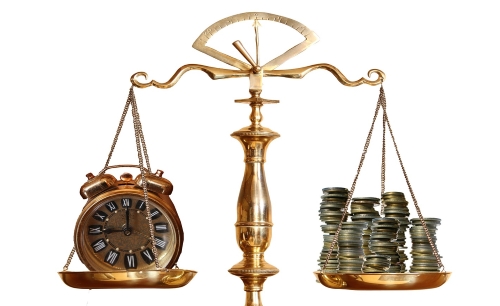I’ve been working on this article in my head for some time now.
The basic concept for the article is the law of diminishing returns.
This law states that as you continue to put time/energy/money/effort into a project, at some point the return you receive for the increased effort is no longer worth it.
It’s sort of like a compressor; put 2 dB in, get 1 dB out.
Turn up the ratio and put 4 dB in, get 1 dB out. You see? Diminishing returns.
Oh, and no makeup gain has been used…
The 90% principle is an attempt to quantify the threshold. That is, at what point does it stop making sense to keep working on or spending money on something.
As you can guess, I suggest that point is 90%. But 90% of what? Let’s say that 100% is perfect, the best something can possibly be, whether it’s a product (like a speaker system), or a project (like a video edit).
My supposition here is that once we get to 90% of perfect, we can generally stop. To the perfectionists out there, this sounds like heresy, but stick with me for a few minutes.
Real World Example
Let’s take the case of a speaker system. I chose this for two reasons: A) The number of choices in the category makes it easy to develop this illustration, and B) I’m in the market for a new PA so this has been on my mind a lot. So, let’s start off defining 100%.
The 100% mark is going to be the absolute best (most musical, most even coverage, flattest frequency and phase response, etc.) PA you can find. For this case, I’m not going to define it further than that. Regardless of what PA you choose as 100%, it’s going to cost you some coin.
What I’ve normally found is that opting for 90% instead of 100% will probably only cost 50-60% of the 100% system. So, you might save nearly half and still get 90% of the performance.
Here’s another one: Consider a video edit. I’ve edited a lot of videos over the years, both when I owned my own company and for various churches. We used to have a saying, “A video is never finished, it’s abandoned.”
When I think of nearly every video I’ve ever cut, I can think of things I would change. Subtle tweaks to edits, minor soundtrack fixes, graphic adjustments, the like. Those changes didn’t get made because we ran out of time or budget.
And honestly, the vast majority of people wouldn’t really notice them anyway. In many of those cases, we probably got 90-95% of “perfect.” The rest we had to let go.
Why 90%?
Now, here’s why I suggest that 90% is a fair stopping point: I believe that most people in the pews can’t resolve any differences above 70%, give or take.
Sure, there may be a few people out there that could see or hear the difference between the absolute best and 80%, but most of the time, it will only be us, the trained professionals, who can discern the critical differences.
Again, this idea may be raising the ire of perfectionists everywhere, and as a recovering perfectionist, I understand.
Here’s the deal; I’m not advocating mediocrity. I’m advocating excellence—but not extravagance.
And, if you stop and think about it, I’m actually suggesting going above and beyond what most people can see and hear by a margin of almost 30% (90 is 28% more than 70…).
Quite often, trying to push your way to the final 10% of perfection will take just as much effort and cash as getting to the first 90%. So what I’m suggesting is that we really stop and evaluate if that is worth it.
Returning To Examples
Now let’s go back to our examples. Take PAs; for our room, we could easily spend nearly $200,000 on a PA to get the absolute best there is. However, I’m pretty confident we can get 90% of that performance for around $100,000.
And the reality is, both of those systems would be a massive upgrade over what we have now. Moreover, I would suggest that almost no one in the congregation would be able to tell much of a difference between the two.
Would I be able to?
I would hope so; that’s what I’m paid for. But Sal and Sally Pewsitter? I doubt it. So is it worth an extra $100,000 for a difference most can’t hear? Perhaps not.
Or how about our video. Let’s say working a full day on the video would get it to 90% of perfection. Now, at this point, we can go home and spend the evening with our family or stick around until midnight and get to 95%.
Is that worth it? Again, I suggest that most people would have thought it was “perfect” at 3 PM.
It’s possible that in some cases it’s worth spending the extra time an energy to get to 100%. However, we have a limited amount of time and resources available, and perhaps it’s a better use of that time and money to wrap it up at 90%.
Consider; saving $100,000 on a PA might buy a really nice console, some great mics and have money left over to do some good in the community. In the big picture, that might be a better option.
This is not a hard and fast rule, but it’s one that I’ve spent a lot of time thinking about. What’s really important? What are we as a church really called to do?
How can we maximize what we’re given to the greatest good? Can we find a way to get out from behind our desks and spend more time with volunteers? Or our families?
Give it some thought, see what you think.
















